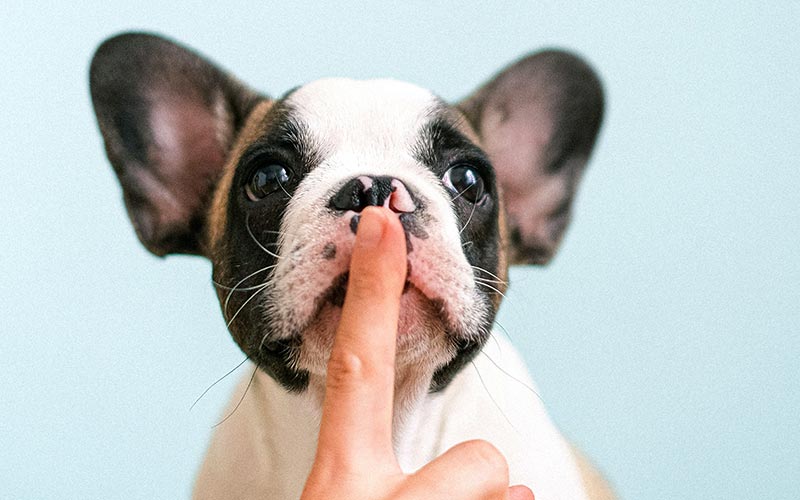HOW CAN WE HELP?
6a - 7p Monday - Friday
6a - 2p Saturday
Mountain Time
PHONE
1-877-738-7237
FAX
1-866-777-1434
MAIL
Pets Best
2323 S Vista Ave. Ste. 100
Boise, ID 83705
My Question
First Name
Last Name
Policy (optional)
Phone
Best Day
Best Time
- Pet Insurance
- Blog
- Woof! Woof! What Does My Dog's Barking Mean?

In conversations, people choose from millions of words and a variety of languages to express themselves. By comparison, dogs do most of their “talking” using postures and body cues. When they do speak, they are capable of making only about 15 different sounds. Dogs choose their barks, woofs and growls very carefully. They never attempt to confuse or deceive when vocalizing with us.
Let’s look at a few common examples of “dogspeak” and decipher what canines are clearly saying:
High-pitched barking
The sound: short, sharp barks
What the dog is trying to say: Dogs who feel distressed when left alone sound their displeasure by making high-pitched, drawn-out vocals with pauses in between. The barks grow higher in pitch and longer in duration as the dog becomes more upset.
Highly social dogs who are used to being around canine buddies or favorite people will make this sound in desperation to relieve anxiety due to being left alone. For example, in a hotel room or other strange new place. And some dogs unleash two or three high-pitched, short barks as a sign of affection when greeting familiar people.
How to respond: Coddling an anxious, high-pitched barking puppy or dog will only increase his anxiety issues. Instead, speak to him in a calm, confident tone to minimize his stress.
Repetitive barking
The sound: The dog makes the same bark in the same pitch and the same tempo over and over again, much like a broken record.
What the dog is trying to say: The No. 1 reason dogs engage in marathon barking is because they are bored and lack the mental and physical stimulation. They have a bad case of the canine “blahs.” Nonstop barking is a clear signal from the dog that his needs are not being met.
Breed-wise, herding dogs, including Border Collies, Corgis, and Australian Shepherds will make urgent, repetitive barks when they herd sheep as they race around to keep the sheep moving in a desired direction. Also, dogs confined to their crates for far too long may transform into nuisance barkers out of sheer frustration.
How to respond: Focus on why your dog won't stop barking and what is triggering the marathon barking. It could be that your dog is crying out for a chance to do something active. If so, step up the daily exercise sessions. If the non-stop barking is due to crate occupation, limit the time your dog spends in his crate to a maximum of five to six hours a day. Consider hiring a professional pet sitter or dog walker to exercise your dog while you are away at work. Provide him long-lasting treats inside his crate, such as a hollow hard-rubber toy stuffed with peanut butter, kibble or cheese.
Howling
The sound: A mournful, high-pitched, long-held note or notes made by a dog who usually will lift his head during this canine “song.”
What the dog is trying to say: Dogs are descendants of coyotes and wolves, two species noted for their singsong vocals. Dogs howl to communicate with other members of their pack and to alert others if they become lost. However, some dogs will howl repeatedly if they are in extreme pain or have been spooked by something in their surroundings. Some dogs will howl at people who sing, depending on the pitch delivered. And finally, dogs howl in response to the sound of sirens or other irritatingly high-pitched sounds that hurt their ears.
How to respond: If the cause of your dog’s howling is due to sirens or other loud, high-pitched sounds that irritate him, consider hiring a professional dog trainer or behaviorist. These professionals can employ desensitization and counter-conditioning techniques to help your dog find the mute button and reduce his stress level. You can also channel your dog's need to howl by training him to "speak" in a more appropriate manner when given a specific cue.
Ensuring the wellness of your pup with pet insurance can give you peace of mind that your dog will continue to express themselves.